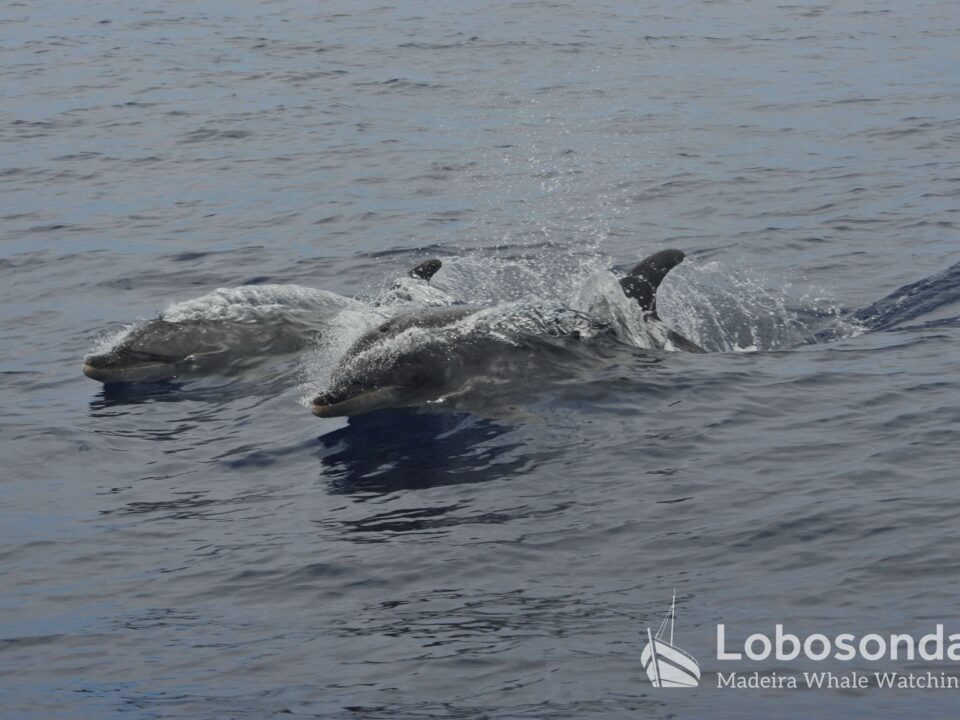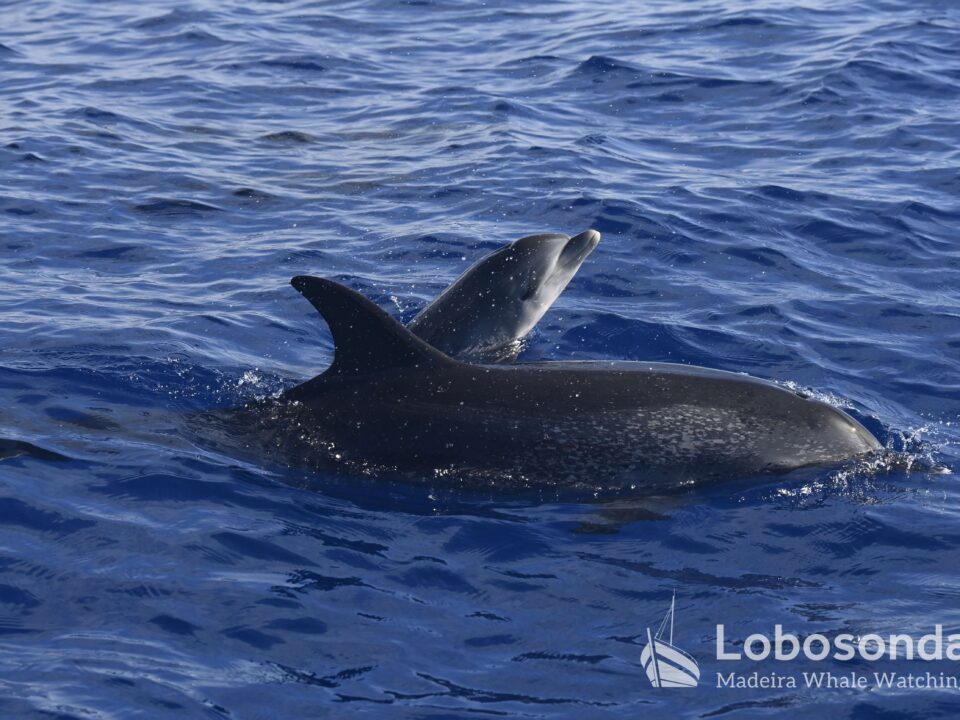
11.11.2024 – Grandma
November 16, 2024
13.11.2024 – A lovely story
November 18, 2024Wonderful sightings of Bottlenose dolphins (Tursiops truncatus) and Sperm whales (Physeter macrocephalus) made our day. The afternoon tour on Stenella was extraordinary. Not only because we saw a beautiful group of Sperm whales, but also because the animals behaved just like they are described in textbooks. We saw what scientists call a “social unit” – a group of often genetically related adult females with calves and juveniles. If you see more than one individual Sperm whale in proximity to each other, it is likely that it is such a female social unit which you are looking at. Just as I explained this to my guests, we did indeed spot a small calf surfacing by its mother (No modern parenting in a whales’ world…if you see a calf, it is very likely with a female). These social unit’s will eventually stay for their whole lives together and move together for long distances, always heading into the same direction. It seems they only separate in the depths when hunting for squid – which makes sense – there is always a female looking out for the young at the surface. The female lifted up her massive fluke and dove into the depth. We spotted another two adult Sperm whales, literally (and textbook-like) heading into the same direction, with another, larger young by their sides. After some moments of watching them, a smaller calf appeared – could it be the one we had just observed? Maybe the calf did not want to stay by itsself and rather spend some family time with his aunties and cousin? It appears that social bonds and calf-care in Sperm whales go as far as nursing each other’s calves. And nursing underwater must be an exhausting task to accomplish, especially if you don’t count with lips like our Sperm whales. But that’s another textbook-story to tell.
by Sarah Kather
Sightings of the day
Ribeira Brava
09:30 Bottlenose dolphins
13:30 No sightings
Stenella
09:30 Bottlenose dolphins, Sperm whales
13:30 Sperm whales
















